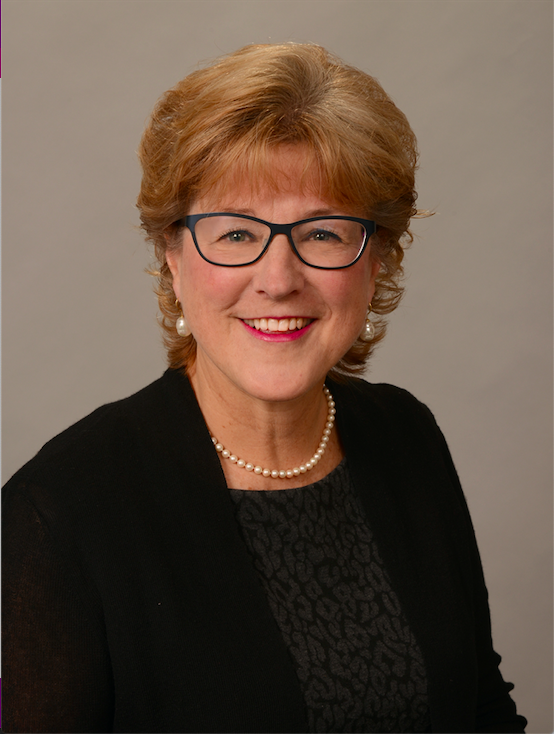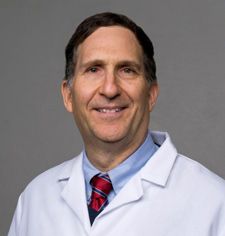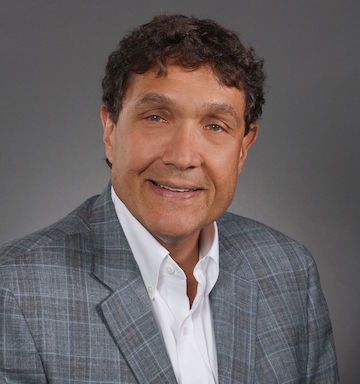Article
Iyengar Touts Importance of Lifestyle in Improving Outcomes in Breast Cancer
Author(s):
Neil M. Iyengar, MD, is a medical oncologist and clinical investigator at Memorial Sloan Kettering, Weill Cornell Medical College and Rockefeller University, who work investigates the links between metabolic health and breast cancer. A key component of his research is the development of clinical trials that examine the role of medication alongside diet and exercise, to prevent obesity-related cancers and improve outcomes.
Neil M. Iyengar, MD, is a medical oncologist and clinical investigator at Memorial Sloan Kettering, Weill Cornell Medical College and Rockefeller University, who work investigates the links between metabolic health and breast cancer. His research combines work with cutting-edge therapies and nonpharmacologic ones such as diet and exercise strategies. As obesity rates rise, Iyengar has pursued work on the role of inflammation in cancer, and his team has shown how inflammation is a key contributor to obesity-related breast cancers. A key component of his research is the development of clinical trials that examine the role of medication alongside diet and exercise, to prevent obesity-related cancers and improve outcomes.
AJMC®: Could you explain the current U.S. screening guidelines for breast cancer?
Iyengar: We recommend screening guidelines based on a woman's baseline risk for developing breast cancer. For a woman who has an average risk—that is, an average risk for the population in the United States for developing breast cancer—we recommend that women who are between the ages of 25 and 40 have an annual clinical breast exam and that could be from their gynecologist or primary care doctor. And women who are age 40 and older should have that annual clinical breast exam plus an annual mammogram. If a women have dense breast tissue, they should have an ultrasound with that mammogram. We also asked women to consider performing a self-breast exam monthly, beginning at age 20. You know, the data for self-breast exam is less robust than, say a mammogram. The mammogram is the gold standard for breast cancer screening. But it can be useful for a woman to become familiar with her breast tissue, so that they're better able to notice any changes.
[Then there are] women who are above average risk for developing breast cancer. This is someone who might have a family history of breast cancer or [has] been diagnosed with atypical hyperplasia in the breast or lobular carcinoma in situ, or if they have a genetic mutation like a BRCA mutation. These are folks who are at higher risk for developing breast cancer. One addition is also women who have been treated with mantle radiation. If they were diagnosed with Hodgkin's lymphoma as a child that can also be increased risk. For that category, we recommend a clinical breast exam a little more frequently: rather than once a year, it would be every 6 months. For an annual mammogram we would recommend starting no later than 10 years before the age of breast cancer diagnosis in their family member—but we would not start earlier than age 25 and not later than age 40. And for those women who have a genetic mutation or a strong family history [of breast cancer], we would also consider adding additional imaging to the mammogram that would be either an ultrasound or using a breast MRI, alternating with a mammogram every 6 months.
AJMC®: The COVID 19 pandemic is still evolving. We’re still seeing waves of Omicron here on the horizon. How, in your personal experience and in your practice, have you noticed that has impacted breast cancer screening? Are patients able to make it to their doctor to get their breast exam or have a mammogram done?
Iyengar: This is, I think, one of the insidious and subtle but very real impacts of the pandemic. Especially the beginning of the pandemic, we definitely saw that screening, especially breast cancer screening, had to be delayed as most hospitals and centers were shutting down or pausing their outpatient operations or non-essential operations. Many of the screening exams got delayed or even canceled. As you know, elective services are starting to come back online, and screening has picked up again. But a lot of folks understandably continued to delay their screening, because of wanting to avoid public spaces or health care facilities, and so forth. Again, completely understandable in the setting of a pandemic. But now that we have protocols in place, and now that we have vaccination, to keep people safe, we know that hospitals and health care centers, outpatient centers are among some of the safest places to be because of the protocols that we follow. And so, we are starting to see an increase in breast cancer screening, but sadly, it still lags—and many of us are concerned that this lag in screening is going to translate to either an increase in breast cancer diagnoses or later stage of presentation. So, I'm certainly urging everyone to get back on schedule and continue with this with the screening now that we have vaccines and protocols in place.
AJMC®: Let’s discuss the research coming from you and your colleagues, particularly around the impacts of the interaction really between obesity and breast cancer. How does the presence of obesity impact the risk of developing advanced breast cancer?
Iyengar: We know that obesity is the leading modifiable risk factor for developing breast and 12 other types of cancer—and probably more than that—but we know definitively that obesity is linked with at least 13 different cancers. And individuals who are obese, which is defined as a body mass index of 30 or greater, have an increased risk of developing hormone receptor positive breast cancer after menopause. And for those folks who have been diagnosed with breast cancer, we also know that obesity, unfortunately, increases the risk of breast cancer metastasis and recurrence across all the subtypes of breast cancer, from triple negative to positive and hormone receptor positive, and for both pre- and post-menopausal women. And so, obesity is a major problem. It's projected that if the current trends continue, by the year 2030, 50% of the US population will fall into the obese category. We’re working to prevent that from happening.
The other piece to note is that some women who are not classically obese—say they have a body mass index of 21 to 25, which is generally a normal weight range—but have a high body fat level are at an increased risk for developing breast cancer. We and others have published data showing that women who have a body fat level of 36% or greater, despite having a normal weight, have more than double the risk of developing breast cancer. That group is particularly vulnerable, because oftentimes, it appears that they have a healthy weight, and they don't receive counseling about how to modify lifestyle to have a healthy body composition. So, we think that measuring your body composition is a better assessment of your understanding your risk for developing an obesity related cancer.
AJMC®: What is the interaction between obesity and these hormone-driven cancers? Can you provide some insight into that? What makes obesity such a problem for HR+ HER2-negative advanced breast cancer?
Iyengar: It's been known for some time that people who have excess body fat or fall into the obese range for body mass index have more circulating estrogens, because the fat tissue makes estrogen. And they also have higher levels of metabolic factors, like insulin, for example. And insulin is a very important hormone for maintaining our energy homeostasis. But insulin is also a growth factor. And insulin can directly stimulate cancer cells to grow. Insulin can also cause DNA damage when it's present in excess, and that DNA damage can lead to the development of cancer cells. And our group added to that body of knowledge by the discovery of adipose tissue inflammation, where we found that the fat tissue in the breast is inflamed in women who have obesity, and that inflammation is not a good thing in the tumor microenvironment because those inflammatory molecules are also growth factors, and they can stimulate the growth of cancer cells.
On top of it, those inflammatory molecules stimulate the gene that encodes for aromatase, which is of course the rate limiting enzyme and estrogen biosynthesis. We use aromatase inhibitors to treat breast cancer. And so, you get excess aromatase and excess estrogen production not only circulating in the blood, but within the breast tissue itself. You have a macro and a microenvironment that's supportive of HR+ breast cancer. And in fact, we know from post hoc analyses of clinical trials that women who are on aromatase inhibitors for the treatment of their breast cancer, if they have obesity, there they are more likely to have breast cancer that's resistant to those aromatase inhibitors. So, we're testing anti-obesity interventions, and lifestyle interventions, such as exercise. Also, medications in combination with standard cancer therapies like aromatase inhibitors. We also have an exercise trial for women with metastatic breast cancer on CDK4/6 inhibitors and hormone therapy for HR+ breast cancer, which we think will increase response to cancer therapy.
AJMC®: I want to follow up with discussing a specific type of breast cancer, that being the HR+ HER2-negative advanced breast cancer. What are your preferred treatment regimens for this patient population? And, to build off your last answer, how does the presence of obesity impact this type of cancer?
Iyengar: One of the silver linings about HR+ breast cancer, of course, is that we have treatments that are not chemotherapy, and that are better tolerated from those kinds of cytotoxic treatments, like hormone therapies, but also molecular therapies. And I would say that, with the approval of the CDK4/6 inhibitors, women with breast cancer are now living much longer on hormone and molecular therapy before having to go on to harsher therapies. And we do think that obesity, will unfortunately decrease the efficacy of these therapies for the reasons that I mentioned earlier.
For example, in the early stage setting, we know that women who are on adjuvant aromatase inhibitors are more likely to have recurrence or metastasis of their breast cancer if they have obesity as well. In that setting, we're testing exercise, were also testing specific diets such as plant based diets, in combination with aromatase inhibitors to reduce the risk of metastasis. And in the advanced setting, we also have data on some of the positive effects of exercise. For example, you can reduce insulin [levels], you can lower inflammation. And on top of that, exercise may also have a direct anti-cancer effect. So, we're testing whether aerobic exercise with CDK4/6 inhibitors and hormone therapy can increase response to that treatment, decrease things like circulating tumor DNA, and while doing that also make people feel better on these treatments.
AJMC®: There are there are a few CDK4/6 inhibitors out there right now. What are the some of the things to consider when you're trying to select which one you'll use in this population of patients?
Iyengar: One of the great things about the CDK4/6 inhibitors is that they all showed consistent efficacy in the metastatic setting, particularly in the first-line setting. But there are some factors that differentiate which agent to use. For example, we have one CDK4/6 inhibitor, ribociclib (Kisqali). That's the only one to have a dedicated trial for premenopausal patients. And so in in my premenopausal patients, I tend to use ribociclib, because that's essentially where the most robust data are to support that CDK4/6 inhibitor.
The toxicity profile can also be helpful in differentiating which one to use. We know that the incidence of neutropenia is a little higher for palbociclib (Ibrance) and ribociclib, than it is for abemaciclib (Verzenio). For patients who may have baseline cytopenias, or have a propensity to develop neutropenia, I may choose abemaciclib. On the flip side, we know that the incidence of diarrhea is much higher with abemaciclib than it is for the other CDK4/6 inhibitors. And so, for patients who don't want to deal with that on a day-to-day basis, or who have baseline [gastrointestinal] issues, I'm probably less likely to reach for abemaciclib. In the adjuvant setting where we're seeing data to differentiate the CDK4/6 inhibitors as well. We now have 2 trials, the PALLAS and PENELOPE trials, which did not demonstrate a benefit for using palbociclib. In adjuvant breast cancer treatment, both for high risk populations and average risk populations. However, we have data for monarchy, which does show a benefit for using abemaciclib, at least in terms of disease free survival for patients with higher risk for early stage breast cancer, and so that I think is starting to come into practice where people are using abemaciclib in the adjuvant setting. And of course, we're waiting for data from NATALEE to determine and whether or not ribociclib is beneficial in the adjuvant setting as well.
What are some of the most promising developments that you see on the horizon, whether it's in screening or therapy or in overall holistic treatment of a patient—including diet and exercise programs that you might be implementing?
Iyengar: I’m veryinterested in and excited about some of the newer molecular therapies that are coming down the pipeline. And we certainly have extended progression-free survival with the CDK4/6 inhibitors. And we now have a PI3K inhibitor, alpelisib, for patients with PI3 kinase-mutated breast cancer. And the other molecular targets in that pathway like AKT inhibitors, for example, are being looked at; the data is kind of mixed there. But there are other molecular targets that are under development that I think of that are of great interest.
In addition, we saw data from the EMERALD study showing benefit for an oral SERD (selective estrogen receptor degrader), which I think is going to be exciting in that we now might have an oral version of a SERD rather than having to rely on fulvestrant for injection. And certainly, in combination with molecular therapies, there are studies that are looking at combinations of oral SERDs with CDK4/6 inhibitors, for example and other molecular therapies.
And so, to give patients the freedom to go to a full oral regimen, will be an exciting advance if those studies are positive. I also think that a great area of need is in the post CDK4/6 inhibitor space. Once patients have developed hormone insensitive disease, or have progressed after a few lines of hormone therapy, the standard of care there really is chemotherapy. There are trials that are testing new agents in that space, for example, antibody drug conjugates. I think that the development and study of sacituzumab in that space is something we're watching closely.
There are other antibody drug conjugates. For example, the development of trastuzumab deruxtecan for patients with HER2-low disease might define a whole new phenotype of breast cancer that would allow for an additional line of therapy that's not chemotherapy in that space. I think that's exciting as well. But on top of all of that, we are making exciting progress in the development of non-pharmacologic therapies, but also metabolically targeted pharmacologic therapies. I think in that setting, we are now developing diet and exercise in the same way you would develop a drug so that we can have precision nutrition and exercise interventions that are matched to a patient's metabolic profile and risk profile to augment the efficacy of more traditional cancer therapies.
And the final thing I'll say is, we're recognizing that many cancers are fueled by metabolic dysfunction. Obesity is just an example of metabolic dysfunction. A lot of a lot of the drugs that we use to treat metabolic disorders may also have efficacy for cancer treatment. We’re testing for example, [sodium glucose co-transporter 2] SGLT2 inhibitors, which are approved for [type 2] diabetes treatment. We're testing that in combination with molecular therapies for breast cancer. There's a new class of drug called METAP2 inhibitors that are that were originally developed to treat obesity. But newer generations of METAP2 inhibitors are now under development for cancer treatment and have been shown in early phase trials to dramatically improve insulin sensitivity, inflammation, and adipocyte levels—those are hormones secreted by the fat and have direct anti-cancer activity because they limit angiogenesis. So, I think we're going to see a new era of what we call metabol-oncology, which is this combined targeting of traditional tumor endpoints, but also metabolic health.
AJMC®: Are there any other closing thoughts?
Iyengar: I think this has come through in our discussion today. But the major message is that we now have plenty of data which supports the benefit—and the importance of—optimizing lifestyle and optimizing metabolic health, to improve outcomes after breast cancer diagnosis, and to improve breast cancer risk. And yes, it's not an easy intervention. Getting someone to lose weight or to diet and exercise can be challenging. But these are also low toxicity interventions, they help people feel better. And on top of that, if they also help make our treatments work better, if someone can be on a CDK4/6 inhibitor for a longer period before they must go on to harsher therapy, for example, that really underscores the utility of optimizing metabolic health. My message would be, at the very least, to not forget about the importance of healthy lifestyle, and diet and exercise interventions for our patients with breast cancer.


